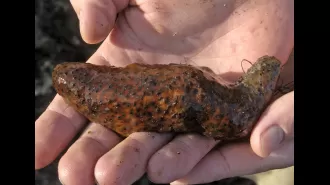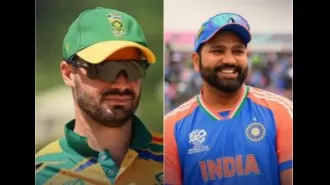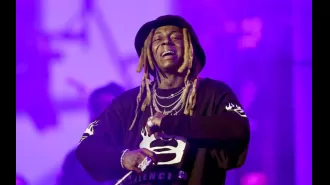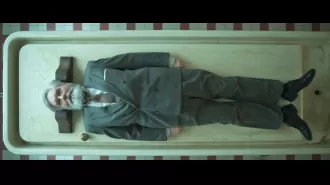Communication issues leading to assassination attempt on Trump are discussed in new report.
Poor communication with local police hindered Secret Service's response at a rally where Trump was injured in July.
September 21st 2024.
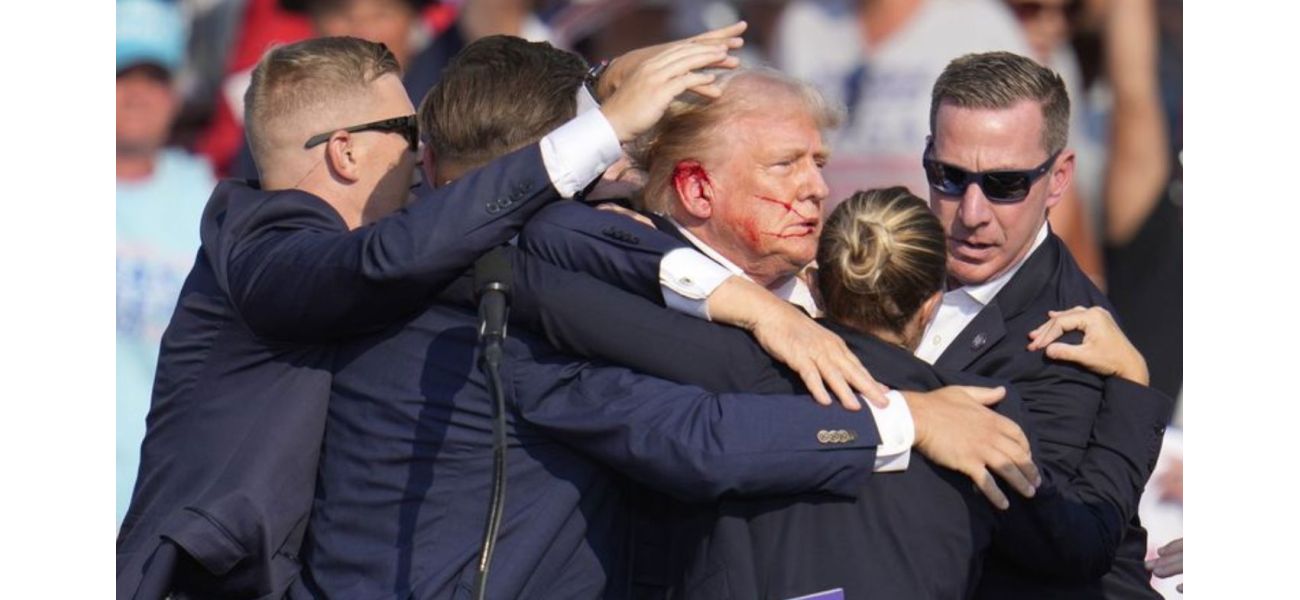
During a campaign rally in July, former President Donald Trump was shot and wounded, and it was revealed that there were communication breakdowns with local law enforcement that affected the performance of the Secret Service. The document released detailing the incident highlighted several missed opportunities to stop the gunman, who opened fire from an unsecured roof.
According to the five-page document summarizing the key conclusions of the report, there were several failings that led to the shooting in Butler, Pennsylvania. These included a lack of clear guidance from the Secret Service to local law enforcement, as well as line-of-sight vulnerabilities at the rally grounds that left Trump vulnerable to sniper fire. Ronald Rowe Jr., the agency's acting director, stated that there was also a sense of complacency among some agents.
Despite the well-documented failures that have been previously reported, the summary document released on Friday is the Secret Service's most formal attempt to acknowledge and address the errors of the day. This also comes amidst fresh scrutiny of the agency following the recent arrest of a man who authorities say stalked Trump at a Florida golf course.
During a news conference, Rowe stated, "This was a failure on the part of the United States Secret Service. It's important that we hold ourselves accountable for the failures of July 13th and use the lessons learned to ensure that we do not have another failure like this again." It is important to note that the full document is still being finalized.
The report describes a series of communication deficiencies before the shooting by 20-year-old Thomas Matthew Crooks, who was eventually killed by a Secret Service counter-sniper after firing eight rounds in Trump's direction from the roof of a nearby building. According to Rowe, this building had previously been identified as a potential hazard, but no appropriate steps were taken to address the issue.
He added, "Line-of-sight issues were acknowledged, but not properly mitigated. On the day of the event, issues were encountered regarding line-of-sight concerns, but they were not escalated to supervisors." Furthermore, there were instances of complacency among some members of the advanced team, which ultimately led to a breach of security protocols.
Other problems that were identified include local police officers being unaware of two communications centers on the grounds, resulting in them not knowing that their radio transmissions were not being received by the Secret Service. Additionally, law enforcement relied heavily on cell phones instead of Secret Service radio frequencies to communicate vital information.
As officers searched for Crooks before the shooting, information was being transmitted through cell phones in a staggered and fragmented manner, rather than through the Secret Service's own network. This failure to broadcast the description of the assailant or vital information to all federal personnel at the rally site inhibited the collective awareness of Secret Service personnel.
The report also raises questions about why no law enforcement officers were stationed on the roof where Crooks climbed onto before opening fire. While a local tactical team was stationed on the second floor of a nearby building, multiple law enforcement entities questioned the effectiveness of their position, but no follow-up discussion was held to address this issue.
Interestingly, there was no discussion with the Secret Service about stationing a team on the roof, even though snipers from local law enforcement agencies were not opposed to the idea. The tactical team operating on the second floor also had no contact with the Secret Service before the rally, as they were brought in by a local police department without the agency's knowledge.
The report also mentions that the Secret Service was aware that the selected rally site, chosen by Trump's staff due to its ability to accommodate a large number of attendees, posed a security challenge due to potential lines of sight that could be exploited by an attacker. However, no security measures were taken on the day of the rally to address these concerns, and the Secret Service had limited knowledge about the local law enforcement support that would be in place.
The executive summary of the report does not name any specific individuals who may be responsible for the failures, nor does it mention any disciplinary actions. However, it has been reported that at least five Secret Service agents have been placed on modified duty. The director at the time, Kimberly Cheatle, resigned over a week after the shooting, taking full responsibility for the lapse.
The Secret Service's investigation is one of many inquiries, including those by Congress and the Department of Homeland Security's inspector general office. Rowe has stated that the July shooting and the recent incident in Florida, where a man was arrested after Secret Service agents detected a rifle near Trump while he was playing golf, highlight the need for a shift in how the agency protects public officials. He assured that Trump is receiving the highest level of protection and that the response in Florida was an example of the agency's procedures working as they should.
According to the five-page document summarizing the key conclusions of the report, there were several failings that led to the shooting in Butler, Pennsylvania. These included a lack of clear guidance from the Secret Service to local law enforcement, as well as line-of-sight vulnerabilities at the rally grounds that left Trump vulnerable to sniper fire. Ronald Rowe Jr., the agency's acting director, stated that there was also a sense of complacency among some agents.
Despite the well-documented failures that have been previously reported, the summary document released on Friday is the Secret Service's most formal attempt to acknowledge and address the errors of the day. This also comes amidst fresh scrutiny of the agency following the recent arrest of a man who authorities say stalked Trump at a Florida golf course.
During a news conference, Rowe stated, "This was a failure on the part of the United States Secret Service. It's important that we hold ourselves accountable for the failures of July 13th and use the lessons learned to ensure that we do not have another failure like this again." It is important to note that the full document is still being finalized.
The report describes a series of communication deficiencies before the shooting by 20-year-old Thomas Matthew Crooks, who was eventually killed by a Secret Service counter-sniper after firing eight rounds in Trump's direction from the roof of a nearby building. According to Rowe, this building had previously been identified as a potential hazard, but no appropriate steps were taken to address the issue.
He added, "Line-of-sight issues were acknowledged, but not properly mitigated. On the day of the event, issues were encountered regarding line-of-sight concerns, but they were not escalated to supervisors." Furthermore, there were instances of complacency among some members of the advanced team, which ultimately led to a breach of security protocols.
Other problems that were identified include local police officers being unaware of two communications centers on the grounds, resulting in them not knowing that their radio transmissions were not being received by the Secret Service. Additionally, law enforcement relied heavily on cell phones instead of Secret Service radio frequencies to communicate vital information.
As officers searched for Crooks before the shooting, information was being transmitted through cell phones in a staggered and fragmented manner, rather than through the Secret Service's own network. This failure to broadcast the description of the assailant or vital information to all federal personnel at the rally site inhibited the collective awareness of Secret Service personnel.
The report also raises questions about why no law enforcement officers were stationed on the roof where Crooks climbed onto before opening fire. While a local tactical team was stationed on the second floor of a nearby building, multiple law enforcement entities questioned the effectiveness of their position, but no follow-up discussion was held to address this issue.
Interestingly, there was no discussion with the Secret Service about stationing a team on the roof, even though snipers from local law enforcement agencies were not opposed to the idea. The tactical team operating on the second floor also had no contact with the Secret Service before the rally, as they were brought in by a local police department without the agency's knowledge.
The report also mentions that the Secret Service was aware that the selected rally site, chosen by Trump's staff due to its ability to accommodate a large number of attendees, posed a security challenge due to potential lines of sight that could be exploited by an attacker. However, no security measures were taken on the day of the rally to address these concerns, and the Secret Service had limited knowledge about the local law enforcement support that would be in place.
The executive summary of the report does not name any specific individuals who may be responsible for the failures, nor does it mention any disciplinary actions. However, it has been reported that at least five Secret Service agents have been placed on modified duty. The director at the time, Kimberly Cheatle, resigned over a week after the shooting, taking full responsibility for the lapse.
The Secret Service's investigation is one of many inquiries, including those by Congress and the Department of Homeland Security's inspector general office. Rowe has stated that the July shooting and the recent incident in Florida, where a man was arrested after Secret Service agents detected a rifle near Trump while he was playing golf, highlight the need for a shift in how the agency protects public officials. He assured that Trump is receiving the highest level of protection and that the response in Florida was an example of the agency's procedures working as they should.
[This article has been trending online recently and has been generated with AI. Your feed is customized.]
[Generative AI is experimental.]
0
0
Submit Comment

